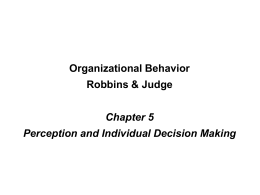

Like all modernist social sciences, organizational studies seek to control, predict, and explain. Modern organizational studies attempt to understand and model these factors. Whenever people interact in organizations, many factors come into play. In Europe these distinctions do exist as well, but are more rarely reflected in departmental divisions. To this distinction, some scholars have added an interest in "meso" - primarily interested in power, culture, and the networks of individuals and units in organizations - and "field" level analysis which study how whole populations of organizations interact. Another traditional distinction, present especially in American academia, is between the study of "micro" organizational behavior - which refers to individual and group dynamics in an organizational setting - and "macro" organizational theory which studies whole organizations, how they adapt, and the strategies and structures that guide them. For instance, one textbook divides these multiple viewpoints into three perspectives: modern, symbolic, and postmodern. Organizational Behaviour studies encompasses the study of organizations from multiple viewpoints, methods, and levels of analysis.

The two years line is equivalent to journal impact factor ™ (Thomson Reuters) metric.Įvolution of the total number of citations and journal's self-citations received by a journal's published documents during the three previous years. The chart shows the evolution of the average number of times documents published in a journal in the past two, three and four years have been cited in the current year. This indicator counts the number of citations received by documents from a journal and divides them by the total number of documents published in that journal. Organizational Behavior and Human Resource Management Q1 (green) comprises the quarter of the journals with the highest values, Q2 (yellow) the second highest values, Q3 (orange) the third highest values and Q4 (red) the lowest values. The set of journals have been ranked according to their SJR and divided into four equal groups, four quartiles. In order to be considered for publication in OBHDP a manuscript has to include the following:ġ.Demonstrate an interesting behavioral/psychological phenomenonĢ.Make a significant theoretical and empirical contribution to the existing literatureģ.Identify and test the underlying psychological mechanism for the newly discovered behavioral/psychological phenomenonĤ.Have practical implications in organizational context Join the conversation about this journal For each topic, we place a premium on articles that make fundamental and substantial contributions to understanding psychological processes relevant to human attitudes, cognitions, and behavior in organizations. We are interested in articles that investigate these topics as they pertain to individuals, dyads, groups, and other social collectives. Topics covered by the journal include perception, cognition, judgment, attitudes, emotion, well-being, motivation, choice, and performance.

The journal features articles that present original empirical research, theory development, meta-analysis, and methodological advancements relevant to the substantive domains served by the journal. Organizational Behavior and Human Decision Processes publishes fundamental research in organizational behavior, organizational psychology, and human cognition, judgment, and decision-making.


 0 kommentar(er)
0 kommentar(er)
